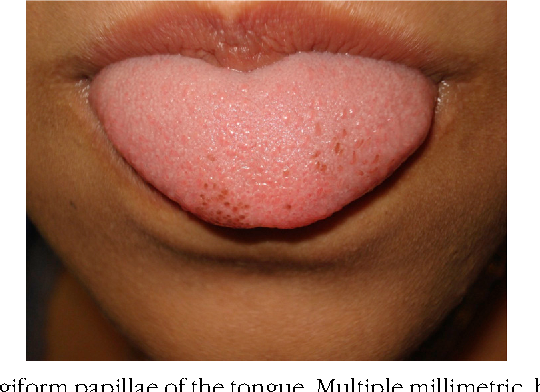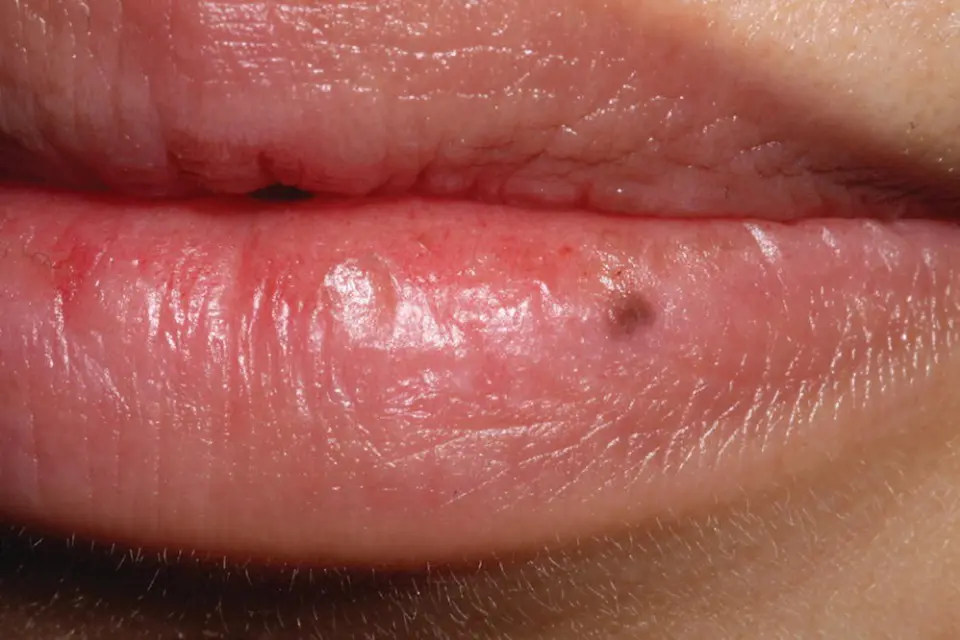Table of Contents
Multifocal Pigmentation: Why You Shouldn’t Ignore Those Little Dark Spots
Intro
Multifocal Pigmentation is a condition that can be caused by various sources, such as dental amalgam, tattoo ink, and graphite. It affects 3.3% of adult US citizens, yet many people are unaware of it. In this blog post, we will discuss why you shouldn’t ignore those little dark spots that may be a sign of Multifocal Pigmentation and why you should take action immediately.
What is multifocal pigmentation?
Multifocal Pigmentation is a common condition characterized by the presence of small dark spots on the skin. These spots, also known as hyperpigmented lesions, can vary in size and shape and may appear on any part of the body. While pigmentation can be caused by a variety of factors, including dental amalgam, tattoo ink, and graphite, the underlying mechanism remains the same – the deposition of exogenous pigments within the skin.
When it comes to multifocal pigmentation, it’s important to understand that these dark spots are not just cosmetic concerns. They can also be a sign of underlying health issues. For example, dental amalgam tattoos, which are the most common cause of pigmentation, occur when small particles of amalgam, a material used in dental fillings, become embedded in the skin. This can be a result of accidental trauma or improper dental procedures.
In addition to dental amalgam, other sources of exogenous pigmentation include tattoo ink and graphite. Tattoos can lead to pigmented spots when the ink particles migrate beyond the intended tattooed area. Graphite, commonly found in pencil lead, can cause pigmentation if it becomes embedded in the skin.
Understanding the causes of pigmentationis the first step in seeking appropriate diagnosis and treatment. In the next section, we will explore the various causes in more detail.

Causes of multifocal pigmentation
Multifocal pigmentation can occur due to a variety of causes, each resulting in the deposition of exogenous pigments within the skin. The most common cause of multifocal pigmentation is amalgam tattoos, which happen when small particles of dental amalgam, commonly used in dental fillings, become embedded in the skin. These tattoos can occur due to accidental trauma or improper dental procedures.
Other sources of exogenous pigmentation include tattoo ink and graphite. Tattoo ink can lead to pigmented spots when the ink particles migrate beyond the intended tattooed area. Similarly, graphite, found in pencil lead, can cause pigmentation if it becomes embedded in the skin.
It’s important to understand thatpigmentationcan be a sign of underlying health issues. While these dark spots may appear harmless, they shouldn’t be ignored. Seeking appropriate diagnosis and treatment is crucial to address the underlying cause and prevent any potential complications.
In the next section, we will delve into the most common cause of multifocal pigmentation, amalgam tattoos, and discuss it in detail. Stay tuned to learn more about this prevalent condition and how to address it effectively.
Amalgam tattoos: the most common cause
Amalgam tattoos are the most common cause of multifocal pigmentation, affecting a significant percentage of the population. These tattoos occur when small particles of dental amalgam, which is commonly used in dental fillings, become embedded in the skin. While they may seem harmless, amalgam tattoos should not be ignored.
Accidental trauma or improper dental procedures can lead to the implantation of amalgam particles in the skin. The dark spots that result from amalgam tattoos are often mistaken for simple cosmetic blemishes, but they can actually be a sign of underlying health issues. Ignoring these tattoos can potentially lead to complications down the line.
It’s important to seek appropriate diagnosis and treatment for amalgam tattoos. There are various treatment options available, including laser therapy and surgical excision. However, prevention is always better than cure. Proper dental procedures and communication with your dentist can help minimize the risk of amalgam tattoos.
Don’t dismiss those little dark spots as insignificant. Take action and consult with a healthcare professional to address any multifocal pigmentation, especially if you suspect it may be caused by amalgam tattoos. Remember, early intervention can make a world of difference in maintaining your overall health and well-being.
Other sources of exogenous pigmentation
When it comes to multifocal pigmentation, dental amalgam tattoos may be the most common cause, but they are not the only source of exogenous pigmentation. Other sources can also lead to those small dark spots on your skin that you should not ignore.
One such source is tattoo ink. Tattoos can sometimes result in the migration of ink particles beyond the intended tattooed area, causing pigmented spots to appear elsewhere on the skin. This can be particularly concerning if the migration occurs near the face or other visible areas of the body.
Another surprising source of exogenous pigmentation is graphite, commonly found in pencil lead. If graphite becomes embedded in the skin, it can lead to the development of dark spots. This may occur due to accidental trauma or contact with pencils.
It’s essential to be aware of these other sources of pigmentation and recognize that they can be more than just cosmetic issues. They may indicate an underlying health problem that requires attention. By understanding the various causes of multifocal pigmentation, you can take the necessary steps to seek appropriate diagnosis and treatment. Don’t underestimate the significance of those little dark spots; they could be a clue to something more significant going on within your body.

Diagnosis and treatment options
Diagnosis and treatment options for pigmentation are essential to address this condition effectively and prevent any potential complications. When it comes to diagnosing multifocal pigmentation, a healthcare professional will typically start with a physical examination and medical history review. They may ask about potential exposure to dental amalgam, tattoo ink, or graphite.
In some cases, a skin biopsy may be performed to confirm the presence of exogenous pigments within the skin. This procedure involves removing a small sample of skin tissue for laboratory analysis. The results of the biopsy can help determine the underlying cause of the pigmentation.
Once a diagnosis is made, treatment options can be explored. The choice of treatment will depend on various factors, including the cause and severity of the pigmentation. Laser therapy is a common treatment method that uses high-intensity light to break down the pigmented areas. This can help fade the spots and even out the skin tone.
Surgical excision is another option, particularly for larger or more persistent pigmented areas. This involves surgically removing the affected skin tissue. However, this approach may be more invasive and carry a higher risk of scarring.
In addition to these treatment options, it’s crucial to address the underlying cause of the pigmentation. This may involve working with a dentist to address any issues related to dental amalgam or a tattoo artist to revise or remove the tattoo.
It’s important to consult with a healthcare professional to discuss the most appropriate diagnosis and treatment plan for multifocal pigmentation. They can provide personalized guidance and help ensure the best outcomes. Remember, early intervention can make a significant difference in managing this condition and maintaining your skin’s health.
Importance of addressing multifocal pigmentation
Multifocal pigmentation may seem like a minor cosmetic concern, but it’s crucial not to ignore those little dark spots on your skin. Addressing pigmentation is important for several reasons.
Firstly, multifocal pigmentation can be a sign of underlying health issues. Those dark spots may indicate an amalgam tattoo or the migration of tattoo ink or graphite particles in your skin. Ignoring these signs can lead to potential complications in the future. By taking action and seeking appropriate diagnosis and treatment, you can address the underlying cause and prevent further problems.
Secondly, addressing pigmentation is essential for your overall well-being. Taking care of your skin health is crucial for maintaining a healthy appearance and self-confidence. Treating the pigmented areas can help even out your skin tone and improve your overall complexion.
Lastly, early intervention is key when it comes to managing multifocal pigmentation. The sooner you seek professional help, the better your chances of successful treatment and minimizing any potential scarring or long-term effects.

